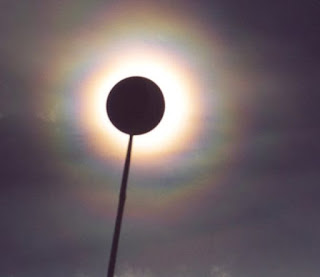The summer of 1914 was one long adventure for Tom Thomson. On May 30, Tom was at Parry Sound and then two days later, he was north on the French River where he camped with Dr. MacCallum. He then spent the next two months at MacCallum’s cottage in Go-Home Bay, Georgian Bay. In a letter to "Fred" (probably his friend and future Group of Seven artist, Fred Varley) dated July 8th Tom wrote:
Tuesday night / Go Home P. O. / Georgian Bay / c/o Dr. McCallum
Dear Fred,
This is only to be a short note. I am leaving here about the end of the week and back to the woods for the summer. Am sorry I did not take your advice and stick to camping.
This place is getting too much like north Rosedale to suit me — all birthday cakes and water ice etc. [...]
Say, Fred, it will be fine to be camping again.
Tom Thomson
By early August, Tom was paddling back to Algonquin Park, travelling north along the French River to Lake Nipissing, then via South River to camp again in his new found home.
A.Y. Jackson joined Tom in mid September and together they canoed around and painted at Canoe, Smoke and Ragged Lakes. They would be joined for a week in early October by Arthur Lismer, his wife Esther, and their daughter, Marjorie, Frederick Horsman Varley (aka Fred) and his wife, Maud.
 |
| Misty Sky Summer 1914 Oil on composite wood-pulp board 8 1/2 x 10 7/16 in. (21.6 x 26.5 cm) National Gallery of Canada, Ottawa (1526). Purchased, 1918 |
Bob and Diana McElroy feel that the landscape of "Misty Sky Summer, 1914" "looks like Algonquin and summer seems a reasonable guess at the season, given the shade of green at the edge of the lake. The dead trees sticking up here and there look like a wetland of some sort." I have paddled extensively around Go Home, the French River, Lake Nipissing and throughout Algonquin and I agree with their assessment. Back in the logging days of Algonquin Park, the ravaged forest canopy would likely show solitary, standing spires. Tom was painting the land and skyscape that he loved.
What inspired Tom Thomson to record this observation in oils?
This is a rain shower. Convection is almost the direct opposite of mist and fog. A cumulus congestus cloud is responsible for this precipitation. It is unlikely that this was a cumulonimbus judging from the associated clouds. Such convection typically requires daytime heating to release the instability in the air mass. A morning view looking eastward is not impossible but the strong likelihood is that this is a late afternoon view looking at the setting sun. This is supported by the strong wave action made possible by stronger winds aloft mixing down to the surface in the unstable air mass revealed by the convection. Looks like the wind stirred up some dust that got mixed in with Tom’s oils before he slid this sketch into his paint box.
Some rain shafts were clearly make it all the way to the ground while others look like they evapourated into thin air – which they often do. Virga is simply precipitation leaving the base of the responsible cloud that evapourates (from water droplets) or sublimates (from ice crystals) before reaching the ground.
- We can see the sun so we know where it is… although the backlit rain shaft and convective clouds reveal the same truth.
- The small and uniform rain drops from the convection result in coloured diffraction rings. The central bright area slightly enlarged is the sun.
- The bottom of the convective cloud is band of grey on the upper third of the panel (good for artistic composition). Note the secondary convection lifting from the shelf in the upper right.
- Friction in the planetary boundary layer (PBL) slows the surface wind. The winds at and above the lifted condensation level (LCL) are relatively unaffected by friction and are stronger. The earth-bound rain shafts have a distinct slant from the right to the left. These towering cumulus were moving with the upper winds and have a component of motion toward the left or south.
- Lots of wave action with 25 knot winds via the Beaufort Scale.




No comments:
Post a Comment